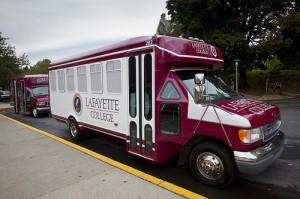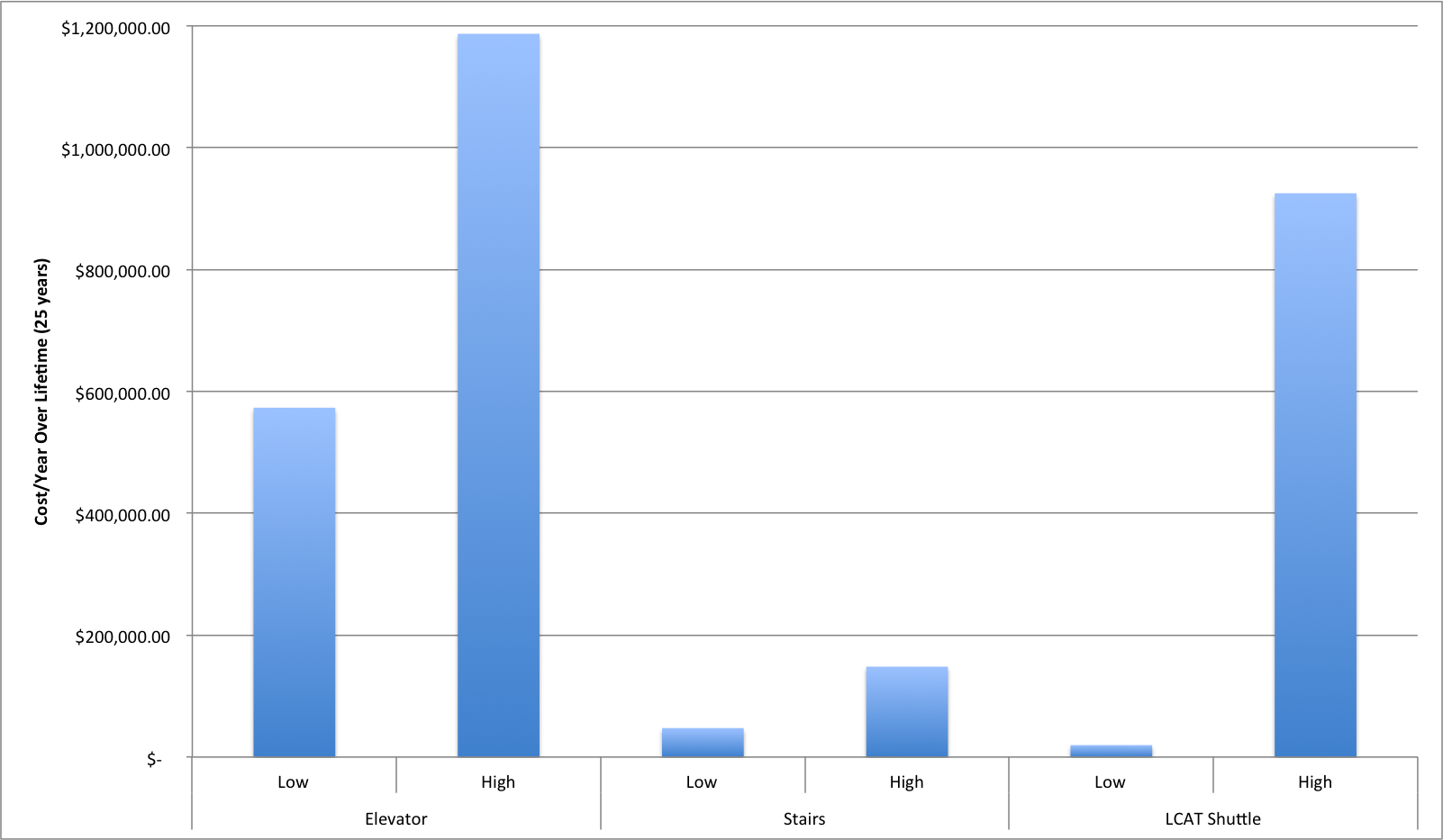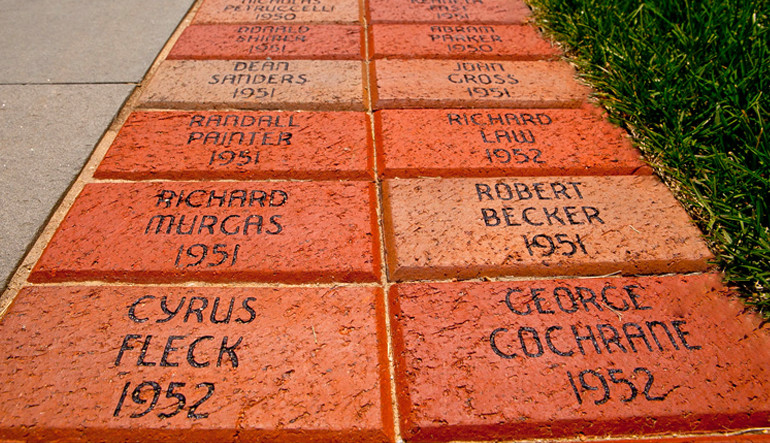Economic Analysis (Stairs)
Introduction:
While many think of economic analysis as a simple cost-benefit comparison, there is much involved, especially when the costs and benefits of a project are more abstract. The Art Stairs, for example, have very little in the way of tangible monetary benefits, necessitating a discussion on the project’s economic context. For the Art Stairs, the project’s economic context is defined by the relationships between the various stakeholders as well as their goals. The two main communities involved in our proposal are the City of Easton and Lafayette College, both of which would benefit from the revitalization of the Third Street stairs. The city would benefit from increased revenue, as more students would be willing to make the journey into Downtown Easton to visit local businesses. Lafayette would benefit economically through the school’s planned expansion. Lafayette is currently planning to increase the size of the student body by expanding further into College Hill (Tatu, 2016). Easton citizens have initially been resistant, but we believe that the improved connections between Easton and Lafayette will allow the school to expand its campus further into Downtown Easton, if they can continue to prove their economic value to the city. A revitalized connection, in the form of the Art Stairs, between Downtown Easton and College Hill could also prove to be an attraction for both the school and the city. People visiting the Art Stairs would generate revenue for the city and a connection that is seen as a point of pride rather than an obstacle for travel would certainly help to increase student interest in Lafayette. The potential for both the City of Easton and Lafayette College to significantly increase their revenue creates a situation where improvements will almost certainly be made. The difficult decision now is determining what improvements to make.

While not the only part of economic analysis, cost considerations are still extremely important to a proposal’s economic viability. In order to determine the economic feasibility of our proposal, the team made a variety of community contacts and gathered a wide range of resources from previous projects that had similar goals. We also thought that it would be beneficial to compare the cost of our proposal to current and future alternatives, namely the Lafayette College Area Transportation Shuttles, know colloquially as the LCAT shuttles, and the Skyway Elevator proposal. It was difficult to determine precise costs for the three projects as we could not receive estimates from contractors and the school was unable to disclose certain information. However, through extensive research the team was able to determine ranges of prices based on material and service cost estimations. In addition to the costs of the projects, the team determined that an essential factor in the analysis would be funding. Without adequate sources of funding it would be impossible for the team to realize the goal of a more connected Easton. It was decided by the team that the best way to fund the proposal would be through a combination of fund raising efforts, state grants and increased revenue through the school’s expansion. The team determined that with a relatively reasonable price tag, as well as adequate sources for funding, our proposal could be a viable solution to one of the schools most persistent problems.
Alternative Projects:
In order to fully assess the feasibility of our proposal, it is necessary to include analysis of alternative solutions. Without other options to compare and contrast to our project it becomes very difficult to understand the relative costs and benefits. The two main alternatives to the Art Stairs are the Skyway Elevator and the LCAT shuttle. While the Skyway elevator has not been approved yet, it has certainly gained enough traction to warrant discussion. The project includes the construction of a glass elevator, an observation deck and a 100 foot walkway. The elevator is expected to be able to hold up to 25 people and will likely be open to the public. With this proposal, the current stairs will remain unchanged as an alternative to the elevator, but will likely remain in their current state of disrepair as their usage declines. The current alternative to the 3rd street stairs, the LCAT shuttles, is a system of shuttles that ferries students between various locations around campus and the greater Easton area. The shuttles are run through the Palmeri Group who have a contract with Lafayette. They facilitate travel to locations that are outside of walking distance as well as make travel easier to isolated parts of campus, notably the arts campus. According to our survey, however, usage of the LCAT system is extremely low as only 1 of 86 respondents reported that the LCAT system is their primary method of commuting between College Hill and Downtown Easton (Student Survey, 2016). The team believes that the art stairs would be a far more viable solution than either of these projects, but in order to confirm this we must analyze the economic components of all three solutions.
The costs of the LCAT shuttle system are difficult to ascertain, as we were unable to obtain the contract between the Palmeri Group and Lafayette College. However, knowing that the shuttles are contracted out does help with estimating the costs of the service. This means that there is no initial cost, maintenance fees or gas expenses but simply one flat fee each year. Because of this, the team decided the best way to estimate this would be on a per student basis. We could not find much information about shuttle bus expenses but we were able to find out extensive information about annual school bus expenses per student. While it is likely that a school bus makes more trips per year, it is also likely more efficient per student as it can take far more students per trip. According to the National Center for Education Statistics it costs approximately $692 per year to bus one student to and from school every day (“National Statistics”, 2011). We used this number to estimate a range for the yearly cost of the Palmeri contract. To get the low end estimate we multiplied the yearly cost per student by the percentage of the student body that named the shuttle as their main form of transport. This ended up being just below $20,000 per year. For the high end estimate we multiplied the yearly cost by the entire student population and found it to be around $925,000 per year. This is obviously a very wide range but without more information it is difficult to be more precise. The team however, determined that it was likely in the higher end of our range, as the Palmeri shuttles almost certainly carry fewer students per mile and lose efficiency due to the smaller scale of its operation. Overall, the team decided that while some aspects of the LCAT system are necessary due to ADA compliance issues, it is extremely inefficient. Unless more students begin to take the LCAT shuttles, the system will need to be adjusted.

The costs of the second alternative, the Skyway Elevator, were slightly easier to estimate due to information directly from the school. According to The Morning Call, Lafayette’s vice president for finance and administration, Roger Demareski, estimated the initial cost of the project to be $9.5 million (Miller, 2016). This does not, however, factor in the maintenance or electrical costs. After averaging several sources estimates for these costs, we determined that the project could cost anywhere between $500,000 and $12 million over the course of the elevators 25 year lifetime (Miller, 2013). Using annual worth analysis with an interest rate of 5%, the team determined that the total annual cost for the elevator would be between $575,000 and $1,200,000. This is far from an ideal price for a project that has few advantages when compared to the current system. Even the Mayor of Easton, Sal Panto Jr., considered the project to be unnecessary in his recent interview with the Lafayette Student Newspaper:
This summer there was also the announcement of the elevator.
“Yes. Waste of money.”
Really?
“[…]You have to put an elevator in, now you have a reason to have an elevator, rather than having just an elevator, which to me does not make use of the $9 million. Put $10 million in or whatever it is to build another dormitory which would still do the exact same thing. I also liked the idea of bringing back the trolley going up the hill.
Because the elevator, looking at where it comes out on the campus, I don’t see neighbors using it. If it becomes just one big elevator, we can make it a tourist attraction, going up there and having a great view of the city and get some nice photos. But, I think there are other ways of doing it.”
You said it’s a waste of money, but it’s not Easton paying that money. It’s mostly Lafayette and the state?
“It’s mostly Lafayette and the state.”
So that’s why you would be okay with it being built?
“Exactly. It’s not my money, but if I were on the board of trustees, I would be looking at a way to maximize that elevator. If they really want to do something for the neighborhood, the elevator has to get somewhere closer to Cattell Street, and it’s not going to get there.” (Morse, 2016)
As can be seen in the interview, the only reason that the Mayor Panto Jr. supports the project is because it benefits the citizens of Easton at no cost to the city. He argues that there are better alternatives to the Skyway Elevator due to its enormous price tag. While the Skyway Elevator is an interesting and fun idea, it does little to improve campus life. This coupled with its extremely high prices make it a far less optimal alternative to the art stairs.
Stairs Economic Analysis:
While the cost of the Art Stairs proposal is as difficult to assess as the alternatives, the team determined that the range of estimates fell within acceptable parameters. The Art Stairs are projected to have relatively high up front costs but extremely low maintenance and upkeep costs. The biggest difficulties in determining the cost of the proposal are deciding what fixtures to include as well as determining the markups due to the difficult terrain. The first costs the team aimed to determine were those associated with the paving of the redesigned stairs. This was difficult, as contractors would not assess the reconstruction without a deposit or a greater assurance that this proposal would be realized. Because of this, the team needed to create their own range of estimates through research into construction costs. It was determined that there would be a variety of factors contributing to the costs, including: waste removal, material, bedding sand, delivery, clean up, labor, overhead costs, as well as a mark up due to the difficult terrain (Whittaker). These costs are seen in the chart below:
| Turfstone | Brick | Porous Asphalt | Eco Grid | Granite | |
| $/Sq. Ft. | $6.00 | $3.96 | $0.75 | $1.44 | $4.24 |
| Waste | $0.60 | $0.40 | $0.08 | $0.14 | $0.42 |
| Taxes | $0.36 | $0.24 | $0.05 | $0.09 | $0.25 |
| Bedding Sand and Road Base | $0.52 | $0.52 | $0.52 | $0.52 | $0.52 |
| Delivery | $0.33 | $0.33 | $0.33 | $0.33 | $0.33 |
| Clean up | $0.20 | $0.20 | $0.20 | $0.20 | $0.20 |
| Basic Labor | $9.00 | $9.00 | $9.00 | $9.00 | $9.00 |
| Basic Sq. Ft. | $17.01 | $14.64 | $10.92 | $11.72 | $14.96 |
| Overhead fee (low) | $4.25 | $3.66 | $2.73 | $2.93 | $3.74 |
| Difficult terrain fee (low) | $3.40 | $2.93 | $2.18 | $2.34 | $2.99 |
| Sq. Ft. (low) | $24.66 | $21.23 | $15.83 | $16.99 | $21.70 |
| Overhead fee (high) | $17.61 | $15.24 | $11.52 | $12.32 | $15.56 |
| Difficult terrain fee (High) | $8.50 | $7.32 | $5.46 | $5.86 | $7.48 |
| Sq. Ft. (high) | $43.11 | $37.20 | $27.89 | $29.89 | $38.01 |
| Total Low | $361,327.34 | $311,045.36 | $231,925.19 | $248,945.16 | $317,946.81 |
| Total High | $631,770.58 | $545,077.51 | $408,663.43 | $438,008.20 | $556,976.56 |
As seen in the chart above, the team determined that repaving the stairs would cost somewhere between $231,925 and $631,770. While these costs vary by material, they are relatively small costs compared to the size of the proposal. This means that economic considerations are a relatively minor factor in material choice.
While repaving the stairs is a significant cost for our proposal, there are a number of other costs that must be considered. Implementing a stone retaining wall, as recommended in our proposal, will cost approximately $120 per foot at a height of 4 feet. This would cost a total of $330,000 for our estimated 2,750-foot perimeter. Grading would also be a significant cost for the proposal, although the terrain and the magnitude of the renovations make estimating a total extremely difficult. In order to get a rough estimate for a total cost, the team used $100,000 for the low-end estimate and $400,000 for the high-end estimate. When considering the artistic component of our project, the size, material and artist can all vary greatly in cost, meaning that any estimates would be almost entirely conjecture. If this cost is not accounted for, however, the team is confident that the total upfront cost would not exceed $2,000,000. For the purpose of producing an estimate, the team included yearly maintenance fees of $10,000 for the low-end and $20,000 for the high-end, both of which are much higher than anticipated. Using annual worth analysis with an interest rate of 5%, the team determined the yearly cost to be between $50,000 and 150,000. For this analysis we used a lifetime of 25 years so this figure could be compared to the elevator yearly costs, however we believe our proposal will have a substantially longer lifetime. The chart below displays the estimated yearly costs for the three proposals. While we did not include a price for the artistic component in our estimate, it is still clear that the Art Stairs are the most economically viable option for revitalizing connections between Downtown Easton and College Hill.

Potential Funding Opportunities:
In order to finance any of these projects, significant work must be put into raising funds. The team imagines that the art stairs could be funded through a combination of school financing and state grants, as this is how the college has proposed to finance the Skyway Elevator. In order to receive money from the state, Lafayette College will likely need to apply for an Economic Development Administration Grant. To receive this, the school will need to fill out a variety of forms to prove that this project will enhance Easton’s economic viability. The college can accomplish this by proving that the stairs will help to “fortify and grow industry clusters”, namely the service industries located in Downtown Easton. Additionally the college can show that the stairs will “advance regional competitiveness” by becoming an attraction for Easton rather than a barrier dividing it in two. With the help of state grants the school could easily afford the renovations to the stairs.

The team would also have to petition the school for funding in order to finance this project. The best way to achieve this would be to fill out a Capital Project Request form, which can be found on the schools website. Through this the school can look at the project and begin to determine if they can raise funds to support it. There are multiple ways the school could go about accomplishing this. This project is in line with the goals of the college’s current Live Connected Lead Change fundraising campaign. As stated in the campaign’s mission statement “At Lafayette, we live connected. And because we live connected, we are prepared to lead change“. The team determined three potential fundraising activities to help the school generate revenue for this project. The first option is to market the project as a senior or class gift. This way they could receive increased funding from a specific class. The second possible event would be an art auction, where community members, faculty and students would donate art pieces to be auctioned off to fund the development of the stairs. The final fund raising suggestion the team has for financing the stairs is replicating the brick donation system seen around the quad. Donors who meet certain thresholds will have their name engraved on bricks lining the renovated stairs. We believe that with these fund raising strategies, in addition to funding from the state, the college will easily be able to afford renovations on the third street stairs.
